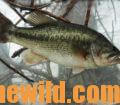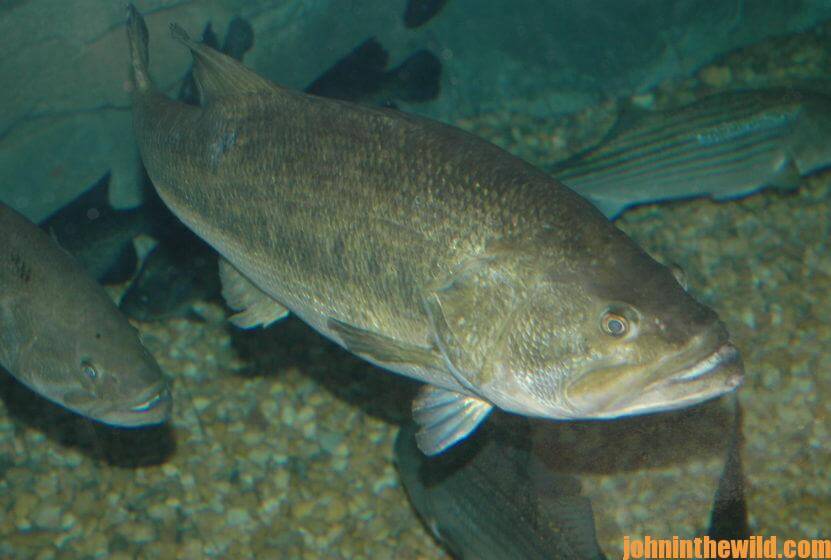Editor’s Note: Hunting season is not the time to be bass fishing, or at least that’s what most sportsmen once believed. However, in the last two decades, with the volume of information that has been unearthed about bass and bass angling, many fishermen have found that hunting season and the cold months of January and February are the most-productive times of the year to bass fish.
Probably the most-effective bass lure for wintertime vertical jigging is the jigging spoon. The heavier the spoon, the deeper and quicker it will go down, and the easier it is to fish at deeper depths. Most of the time, I prefer a 1/2-ounce or a 5/8-ounce spoon. But just because you have a bait in front of the bass at the same depth they are in does not mean that the fish always will take the bait. 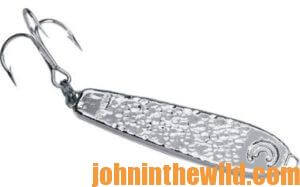 Fishing the jigging spoon is an art form that can become highly sophisticated when practiced by the masters.
Fishing the jigging spoon is an art form that can become highly sophisticated when practiced by the masters.
A fallacy that prevents many anglers from vertical jigging for bass in the wintertime says that if an angler pulls his boat right on top of a school of fish, he will spook the bass. If the bass are in 6-8 feet of water, that theory may be true. But most of the time in the winter, the bass will be much deeper. The presence of a boat over their heads will in no way inhibit the bass’s desire to take lures. However, common sense dictates that dropping an anchor in the bottom of a boat or kicking over a tackle box may run fish off. The real expertise in catching bass on the jigging spoon in the wintertime is to know exactly how the bass wants that jig presented before it will take the lure.
Often when bass are somewhat more active in the winter, the fish will attack the spoon as soon as it falls from the surface. This bass is like a hungry dog waiting for a steak to fall off the back of a meat truck. As soon as the dog sees the steak falling, it will jump up in the air and grab the steak. At other times, the bass prefers that spoon on the same level where it is and twitched slightly before the fish will hit. When angling is very slow, that bass is just like a dog with a full belly. Unless you wipe that steak across the bass’s mouth, and it decides to yawn at the same time the steak is passing by, you never will catch the bass.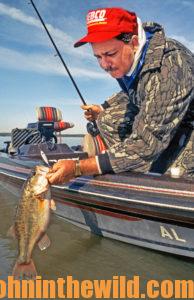
When fishing the jigging spoon for bass in the winter, often all a sportsman must do is drag the spoon back and forth through the water extremely slowly to get a bite or twitch it with a very-slight flick of the wrist. The strike may be very light, or you simply may feel pressure on the end of the line when the bass takes the lure. At other times, the strike will be so violent that it may snatch you out of the boat. One good rule of thumb for wintertime jigging is to remember that the longer the weather has been bitterly cold, generally the slower you need to work the spoon, and the lighter the strike will be.
Fishing a jigging spoon in schooling bass may see the angler catching and releasing 20 bass from one school – if there is a good concentration of wintertime bass. However, usually you won’t be taking really-big bass when you locate a school of this size.
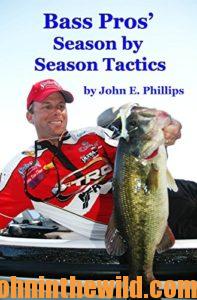 To learn more about catching bass, check out John E. Phillips’ book, “Bass Pros’: Season by Season Tactics” at https://amzn.to/2IKUhe and available in Kindle, print and Audible versions.
To learn more about catching bass, check out John E. Phillips’ book, “Bass Pros’: Season by Season Tactics” at https://amzn.to/2IKUhe and available in Kindle, print and Audible versions.
Tomorrow: What Other Tactics to Use Where to Catch Wintertime Bass


